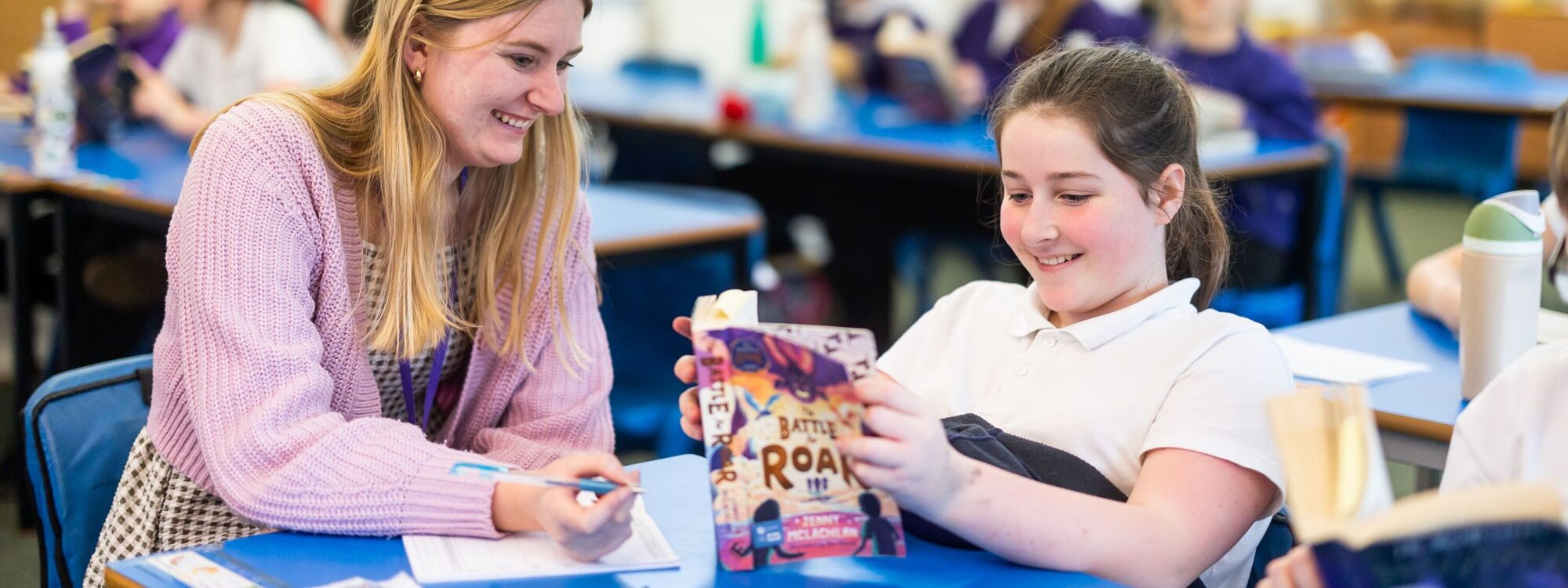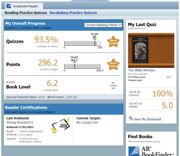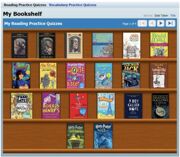Reading
Reading Leader: Mrs Abbie Parkin
Email: abbie.parkin@portfield-tkat.org
At Portfield we love reading! We believe that reading is essential to enable children to access and understand all areas of the curriculum and their future life. In school we teach reading through three different strands - phonics (Sounds-Write), comprehension and fluency (Whole Class Reading) and reading for pleasure. During the school day, time is devoted to these three strands of reading to ensure that our children become knowledgeable and enthusiastic readers (see our reading timetable by clicking the blue box). Our teachers also read high-quality texts to the children every day so that they have to opportunity to listen to wonderful stories as well as read them for themselves.
When our children are first learning to read, they read phonics books, from the Dandelion Phonics reading programme, that match the sounds they have already learnt during their Sounds-Write lessons. These books include words that the children are able to decode (break down) using the sounds they have learnt in their phonics sessions. This enables them to feel successful and helps them to become independent readers. Whilst the children are learning the basics of reading through phonics, they will also read high-quality picture books from our school library to encourage them to truly love books and stories.
Using the National Curriculum for reading, we have developed a comprehensive 'Reading Progression of Knowledge and Techniques' document to ensure that pupils build on their reading knowledge and skills over time.
Well-researched reading spines (see the 'Whole Class Reading' page) also provide our children access to high-quality, diverse texts that get progressively more complex as they move through the school. Throughout each topic in our curriculum, the children learn from, enjoy and imitate the style of these books in order to master the skills of reading for themselves.
To demonstrate the importance we place on reading, our children also read every day at home, which is recorded in their reading records. We also recommend that parents of our younger pupils share a range of books with their child, allowing them to access and enjoy information or stories that they are interested in, but may not be able to read themselves. These books are chosen by the children from their class library.
Phonics - Sounds Write
Phonics Leader: Mr Luke Howard
Email: luke.howard@portfield-tkat.org
What is Sounds-Write?
At Portfield Primary Academy we have taken the very important decision to adopt the ‘Sounds-Write’ Phonics programme. We are dedicated to ensuring that each and every one of our children learns to read with accuracy and confidence. We believe that the Sounds-Write programme enables us to do this, as well as allowing us to support you in fostering a love of reading in your child that will last a lifetime.
Sounds-Write is effective in teaching pupils to read, spell and write because it starts from what all children know from a very early age – the sounds of their own language. From there, it takes them in carefully sequenced, incremental steps and teaches them how each of the 44 or so sounds in the English language can be spelt.
The words used in the teaching process and the conceptual knowledge of how the alphabet code works are introduced from simple to complex. For example, at the start, simple (one sound, one spelling) CVC words (consonant, vowel, consonant) only are introduced. Pupils quickly learn to read and spell words such as 'mum', 'dog', 'jam' and 'sit'. When all the single-letter sound-spellings have been introduced and established, Sounds-Write begins the concept that the sounds 'f', 'l', 's' and 'z' can be spelt with the two letter-spellings: 'ff', 'll', 'ss' and 'zz', respectively.
As the programme progresses, the complexity of one-syllable words is carefully increased through a variety of VCC, CVCC, CCVC, CCVCC and CCCVC words, such as, for example, 'elf', 'hand', 'swim', 'trust' and 'scrub'.
After this, pupils' understanding of the concept 'two letters - one sound' is further developed through the introduction of the most common consonant two-letter spellings: '', '' and '', in words like 'shop', 'chimp' and 'thin', for example.
Finally, two, three and four letter spellings of the vowels are introduced and pupils are taught how to read and spell polysyllabic words, starting with simpler words (such as 'bedbug') and gradually moving to the more complex (such as 'mathematical').
All of this is taught within a well-structured framework based on the knowledge - both conceptual and factual on which the alphabet principle and thus the writing system is based and the three key skills needed to enable learners to use the principle effectively.
Our approach teaches the conceptual understanding needed to become an effective reader:
• that letters are spellings of sounds: visual language is a representation of spoken language
• that a spelling can contain one, two, three, or four letters - examples are: s a t, f i sh, n igh t and w eigh t
• that there is more than one way of spelling most sounds: the sound 'ae', spelt as in 'name', can be represented as in 'table', in 'rain', in 'eight', in 'play', and so on
• that many spellings can represent more than one sound: can be the sound 'e' in 'head', 'a-e' in 'break', or 'ee' in 'seat'
Within this conceptual framework, we teach the factual knowledge required to become an effective reader and speller: the approximately 176 spellings that represent the 44 or so sounds in English, starting with the most simple one-to-one.
Reading and spelling also requires expertise in the skills necessary to make use of the alphabet code and pupils need to be able to:
• segment, or separate sounds in words
• blend, or push sounds together to form words
• manipulate sounds: take sounds out and put sounds into words
Sounds-Write provides opportunities for practising these skills on an everyday basis until pupils achieve the automaticity required for fluent reading and spelling.
Whole Class Reading
Reading Leader: Mrs Abbie Parkin
Email: abbie.parkin@portfield-tkat.org
What is Whole Class Reading?
At Portfield, we have decided to implement a whole class approach to reading comprehension and fluency. We aim to ensure that children become analytical readers, have an awareness of authorial intent and can justify and explain their own opinions.
Adopting this approach also allows all children to read and comprehend above their word reading ‘level’. It is expected that all of our children will develop good levels of comprehension. Good comprehension draws from linguistic knowledge (in particular of vocabulary and grammar) and on knowledge of the world.
We believe that the best way to develop comprehension skills is through pupils’ experience of high-quality discussion with the teacher, as well as from reading and discussing a range of stories, poems and nonfiction. With the new National Curriculum split into three key areas: Reading for Pleasure, Vocabulary Development and Oral Comprehension, a whole class approach to reading will enable children to develop their skills within each of these. All children will be given the opportunity to read aloud, listen to a text read by a teacher or peer and develop their ability to be able to discuss what they have heard in a constructive way. Unfamiliar vocabulary will be explored and explained within a familiar context, ensuring a breadth and depth to their reading as well as enhancing their enjoyment.
Discussion about high quality literature is expected from the beginning of their school life at Portfield and the quality of the children's contribution to these discussions and the evaluations that proceed will develop throughout their time with us, with teachers ensuring that this is always to a high standard. We expect our staff to model high expectations of discussion, an enjoyment and pleasure in reading and a desire to learn and experiment with new and unfamiliar vocabulary.
Please note that our reading spines are 'live' documents. We are currently improving these documents to ensure that, to the best of our knowledge, our pupils are studying the highest quality texts and that they create meaningful links to the themes and concepts we teach across the wider curriculum.
Accelerated Reader
What is Accelerated Reader?
Accelerated Reader is a customised reading programme that meets the needs of individual students. Students are given their personalised Reading Range – their ‘Zone of Proximal Development’ – this enables students to find a book which is appropriate to their reading level. Teachers encourage students to read a variety of books to develop their literacy skills and help them to meet the challenges of life in the 21st century.
Children use in-school Accelerated Reader time and daily home reading time to support their development of reading fluency and comprehension. Students have access to the library at various times throughout the school day so that they can choose their books, read and take a computerised quiz on their chosen book. These quizzes give the children instant feedback on their progress, including a percentage of questions correct, termly targets and overall word count.
We are delighted that Portfield has been identified as a high-performing Accelerated Reader school and so has been awarded Renaissance Champion School status. This means that schools that are looking to improve their use of Accelerated Reader and schools that would like to start using the programme will be able to visit Portfield to find out more about it.
What is Home Connect?
Accelerated Reader Home Connect improves the school-to-home connection by allowing parents and children to log into a website and view each child’s reading practice and progress towards targets. Access to online results promotes discussion between parents and children, which motivates children and can make their reading practice even more effective. In addition, parents can specify up to six email addresses to receive automatic updates on their child’s reading progress.
If your child is using Accelerated Reader, they should have brought home login details to allow you to access your child’s progress pages. Please find information about the website below:
My Progress |
My Bookshelf |
|---|---|
| Renaissance Home Connect gives parents and children a snapshot of the child’s Accelerated Reader progress, including average percentage correct on quizzes, number of points earned and an approximate ATOS book level. | Parents and children can see all the books the child has read. Clicking on a book shows details such as the book level, word count, points and more. |
|
|
|
Reading Plus
What is Reading Plus?
Reading Plus is an online program for children that teaches them to be stronger readers. It does this by developing silent reading speed, then gradually introducing more complex stories, texts and vocabulary. Children have access to 800+ high quality online texts that are constantly updated and adapted to meet every child’s needs, regardless of what level they are reading at. Teachers can monitor exactly what and how children are reading, meaning they can offer the right kind of support when needed.
At Portfield, we use Reading Plus in Key Stage 2 (Years 3, 4, 5 and 6). Children use the program four times per week for between 20-30 minutes per day.
What will my child gain from using the program?
First and foremost, we hope that they will get a lot of enjoyment from using Reading Plus! The stories and texts are short and engaging to keep levels of motivation high, and your child will read about many things outside of their normal scope of reading – anything from ‘What can one child do to save the world?’ to 'The future of AI'. Your child will challenge themselves to become a better reader and in doing so, develop better reading habits. They will gain a greater understanding of what they have read and be better prepared for reading at speed for both enjoyment and learning.
How does Reading Plus work?
Children choose a text (typically 6-7 minutes in length) from a level appropriate to their reading ability. Once they finish the story, they answer ten questions to test their understanding of what they just read. Teachers can see reports detailing your child’s progress. Reading Plus is not meant to replace reading books, and Reading Plus is not just an eLibrary – the program is designed to teach your child to become a more efficient reader which will add to their enjoyment of reading independently – developing a lifelong love for reading.
How does my child log in?
Use the link below and use the following 'Site Code': RPPORTFIEL
https://student.readingplus.com/seereader/api/sec/login
Your child will have a unique username and password. If you are unsure of any of these, please get in touch with your child’s teacher.
Does Reading Plus work on a laptop or an iPad?
Yes, Reading Plus runs on laptops and iPads as well as tablets, Chromebooks, desktops and MacBooks. We wouldn’t recommend using Reading Plus on a smart phone simply because the text is too small to read effectively.
Do I need to download an app?
Reading Plus doesn’t need an app to work – it’s all accessed through a secure website.
How long should my child be on Reading Plus?
Ideally every day for about 30 minutes (at home and in school combined), but at least 3 times a week. Little and often is best! Your child will use Reading Plus 3 or 4 times per week in school for approximately 20-30 minutes at a time.
Why does the program use the moving bar when my child reads the stories?
We call this the ‘Guided Window’. The Guided Window was developed to teach children to navigate across lines of text sequentially – this is sometimes called left to right scanning.


